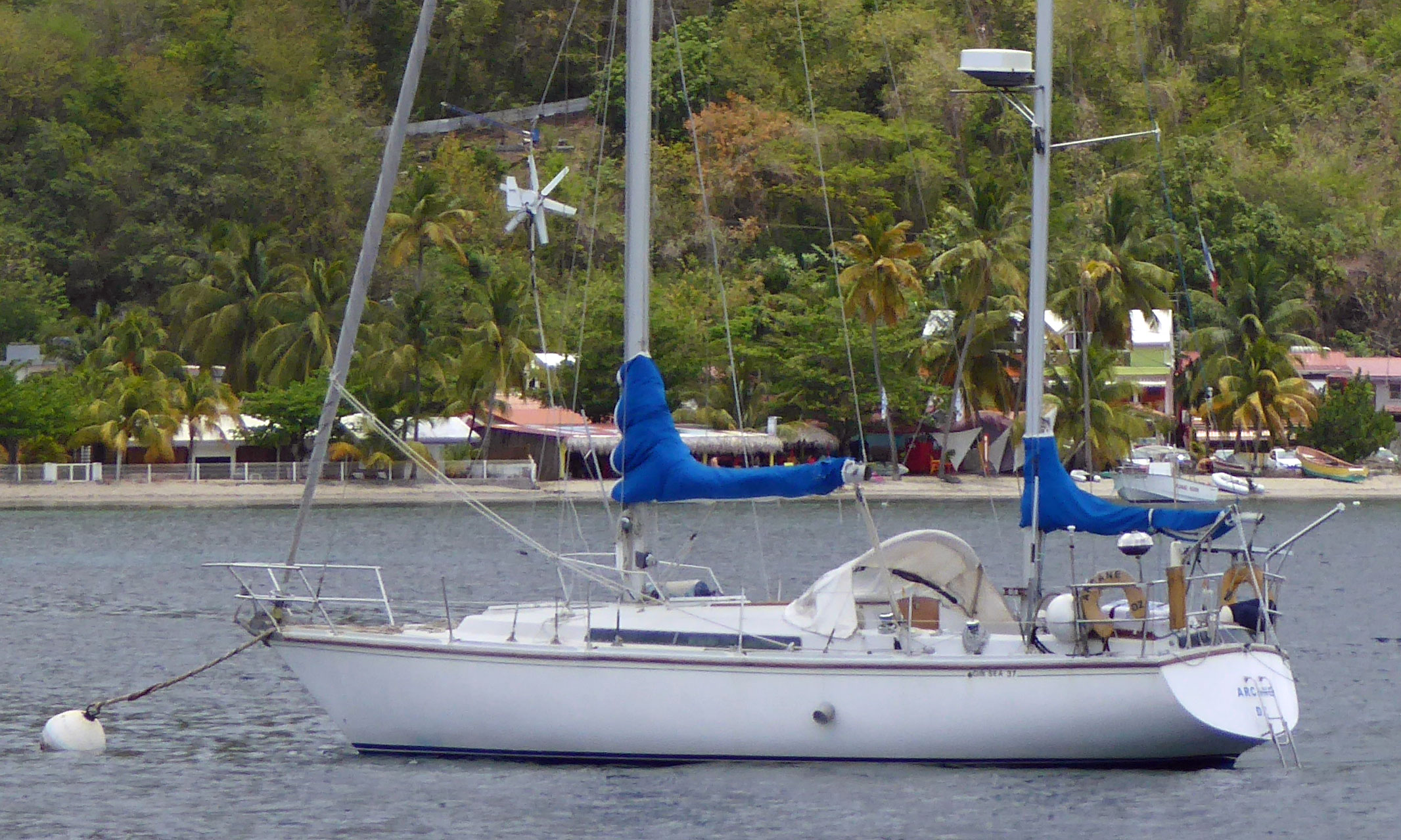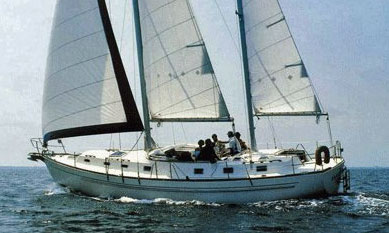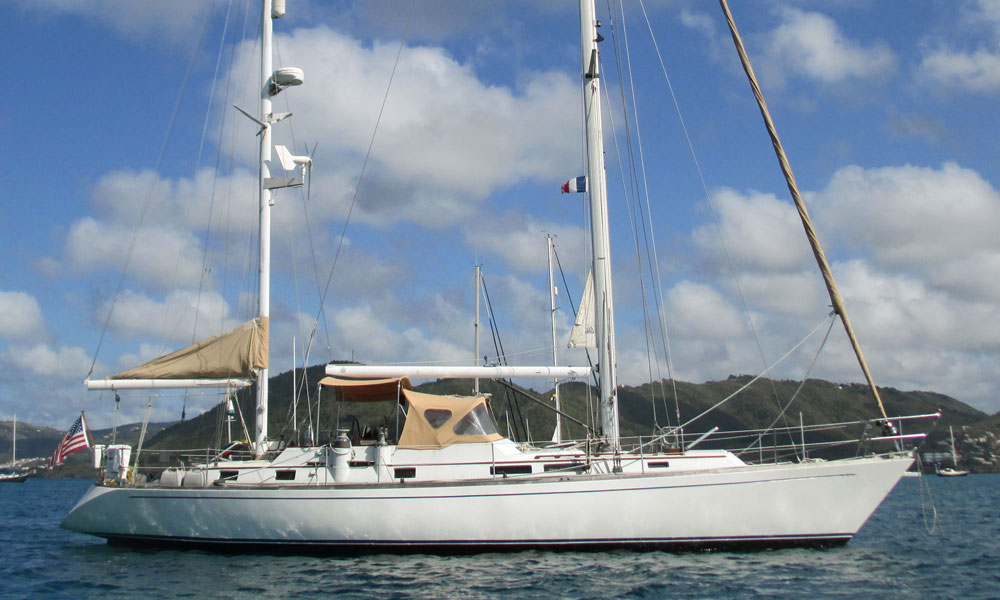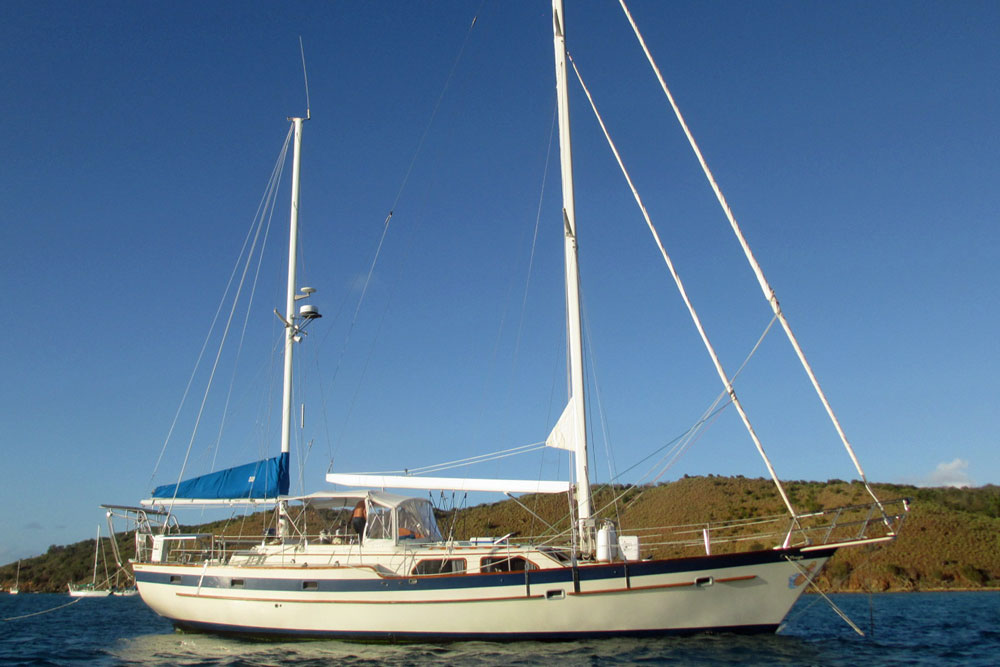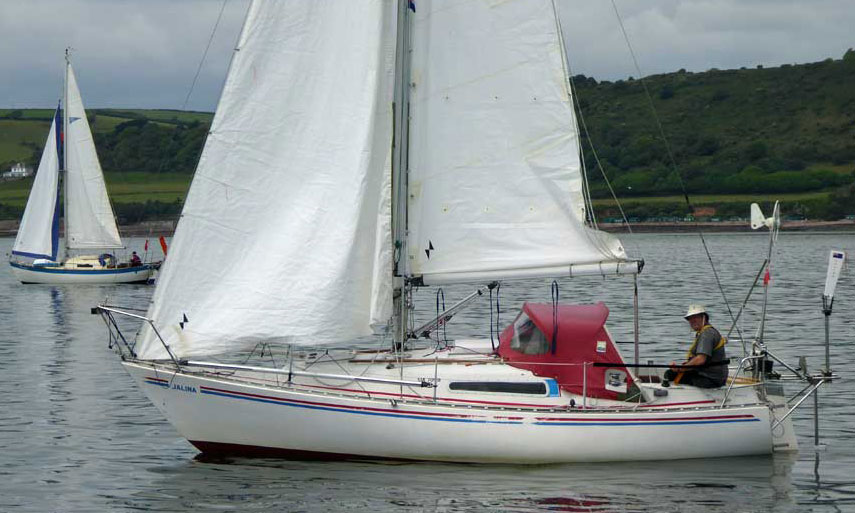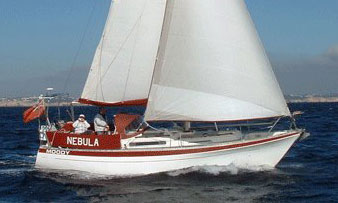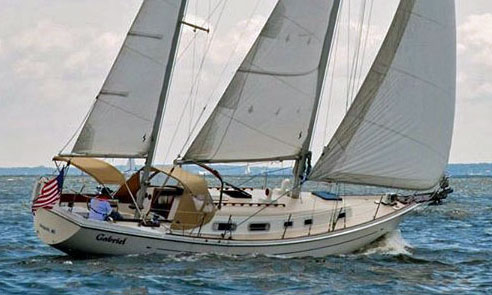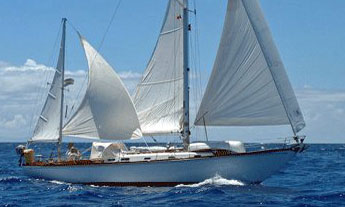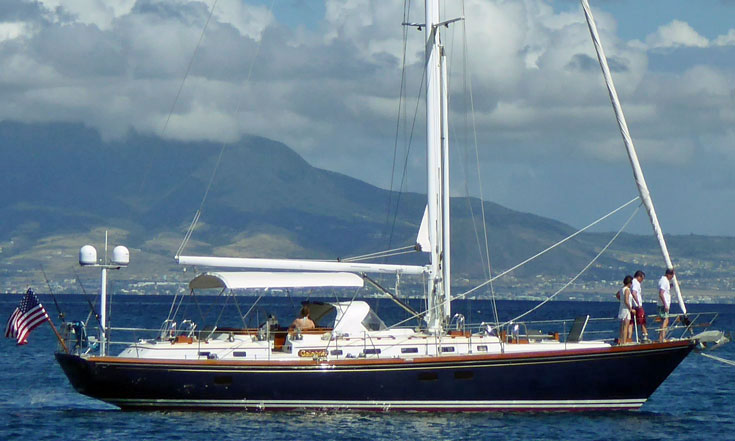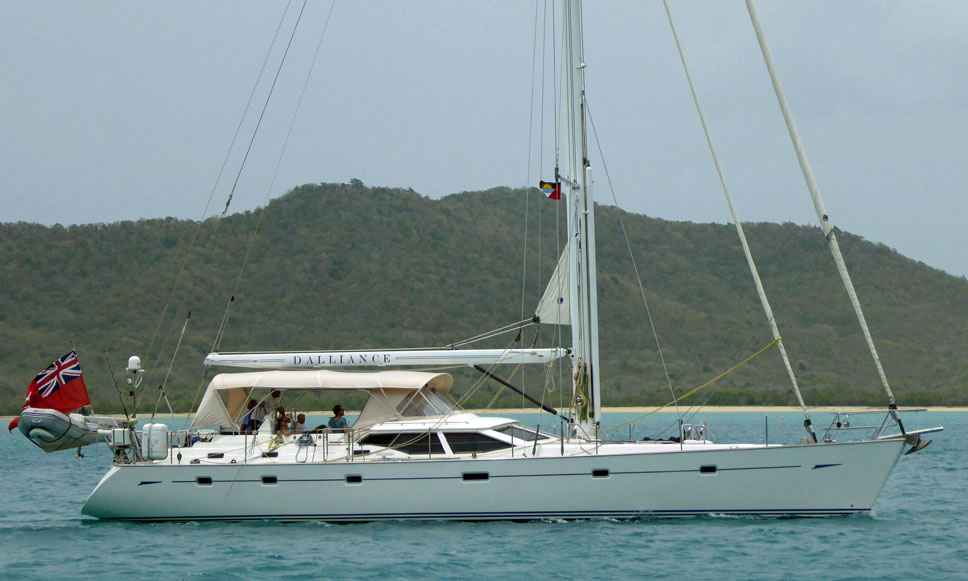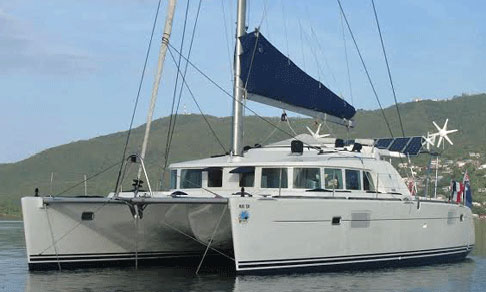- Home
- Types of Sailboats
- Ketch Sailboat
Does A Ketch Sailboat Make
A Good Cruising Boat?
A ketch sailboat most certainly does make a good cruising boat! With the total sail area split between 3 sails (or 4 in the staysail ketch version shown below), sail handling is easier for a shorthanded crew than it would be on a sloop of similar size.
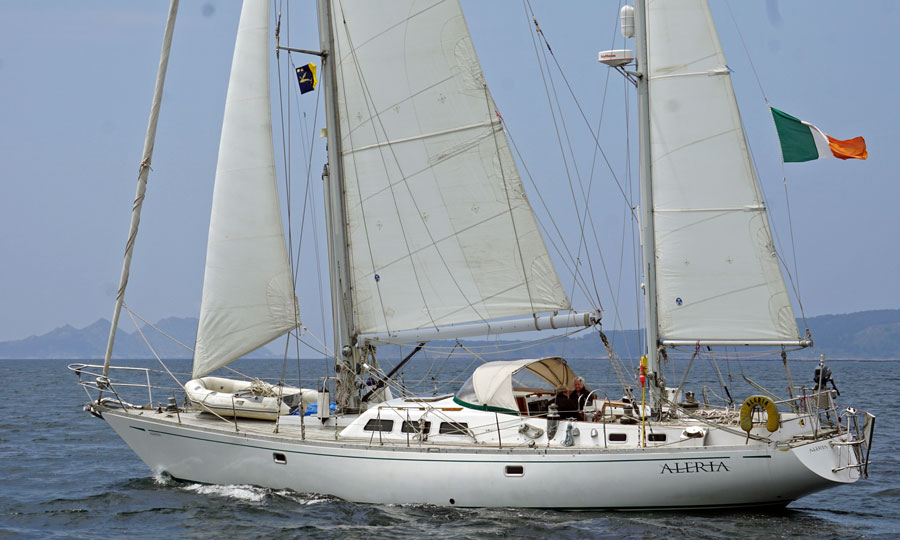 Some ketches, particularly larger ones like this one sport a cutter rig and are then known as a 'staysail ketch'.
Many thanks to Alex and Daria Blackwell for this great pic of their Bowman 57 'Aleria'.
Some ketches, particularly larger ones like this one sport a cutter rig and are then known as a 'staysail ketch'.
Many thanks to Alex and Daria Blackwell for this great pic of their Bowman 57 'Aleria'.But could it be a Yawl?
It's easy to confuse a ketch sailboat with a yawl so perhaps we should clear that up before we go any further. Both are two-masted rigs with a mainmast foremost and a smaller mizzen mast aft.
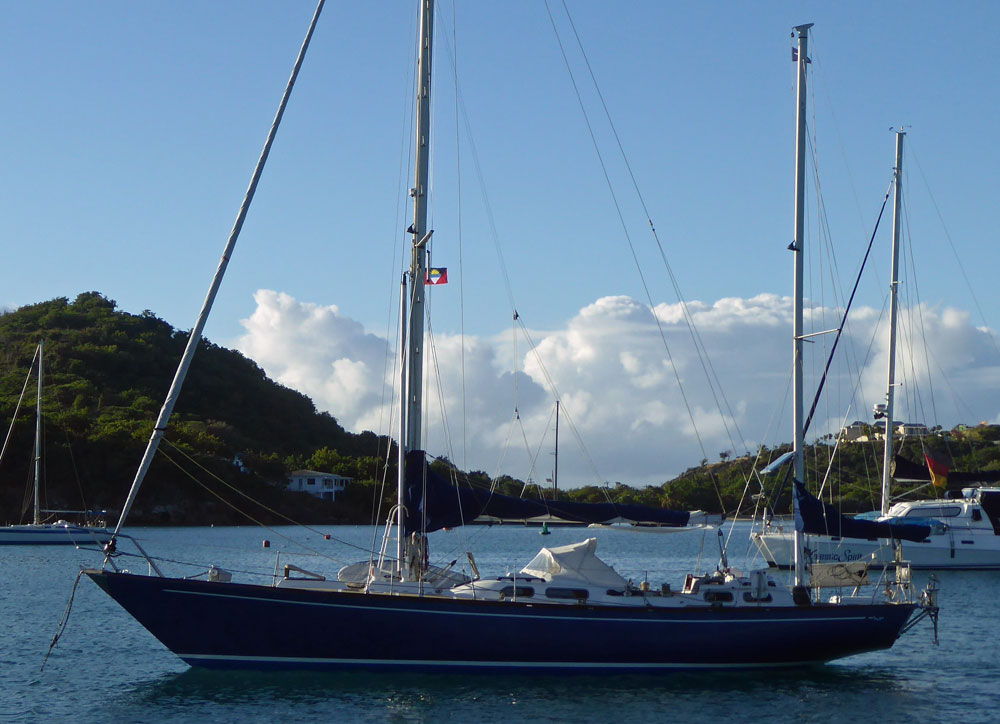 Compare this Bowman 46 yawl with the Bowman 57 ketch above
Compare this Bowman 46 yawl with the Bowman 57 ketch aboveIt's generally accepted that the difference between the two types comes down to the location of the mast in relation to the rudder post. In a yawl the mizzen is aft of the rudder post and in the ketch, it's forward.
But the real difference is one of purpose. The mizzen on a yawl is intended to help trim the boat, in capable hands giving them the ability to follow a compass course despite minor wind shifts.
This was a very handy feature in the days when commercial fishing was done under sail, but these days efficient autopilots and navigation aids have made this less important and the yawl has generally fallen out of favour.
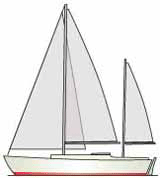 Ketch: Mizzen mast ahead of the rudder post Ketch: Mizzen mast ahead of the rudder post |
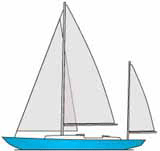 Yawl: Mizzen mast aft of the rudder post Yawl: Mizzen mast aft of the rudder post |
The Mizzen Sail on a Yawl or Ketch Sailboat
The mizzen sail of a ketch is larger than that of a yawl and is there to add drive. And so it does - off the wind.
On the wind though, the mizzen is likely to add nothing but drag, being back-winded most of the time by the mainsail.
In these conditions the mizzen sail may as well be dropped, at which point the ketch becomes in effect an under-canvassed sloop.
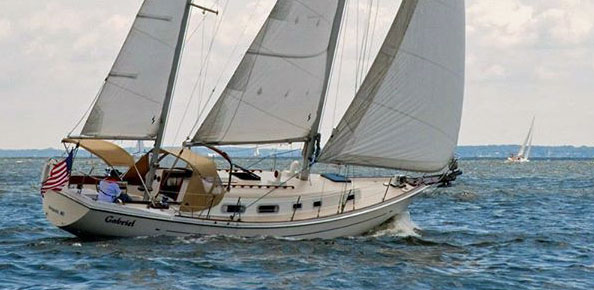 An Allied Princess 36 Ketch makes good progress to windward
An Allied Princess 36 Ketch makes good progress to windwardThe Mizzen Staysail
Off the wind a ketch is at its most efficient, particularly so if cutter rigged and with a mizzen staysail set.
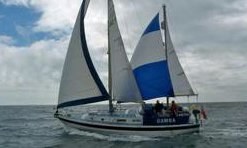 Reaching with a mizzen staysail
Reaching with a mizzen staysailThat's the sail set between the head of the mizzen mast and the foot of the main mast, as on the Westerly 33 shown here.
But all the additional hardware - mizzen mast, sails, winches, standing and running rigging - comes with a considerable cost burden.
But there are benefits to be had from a split rig of a ketch:~
- First, they offer greater flexibility for sail reduction, allowing a jib and mizzen configuration in strong winds;
- secondly, at anchor where with the mizzen set as a steadying sail, the boat will lay comfortably head-to-wind.
The Triatic Backstay
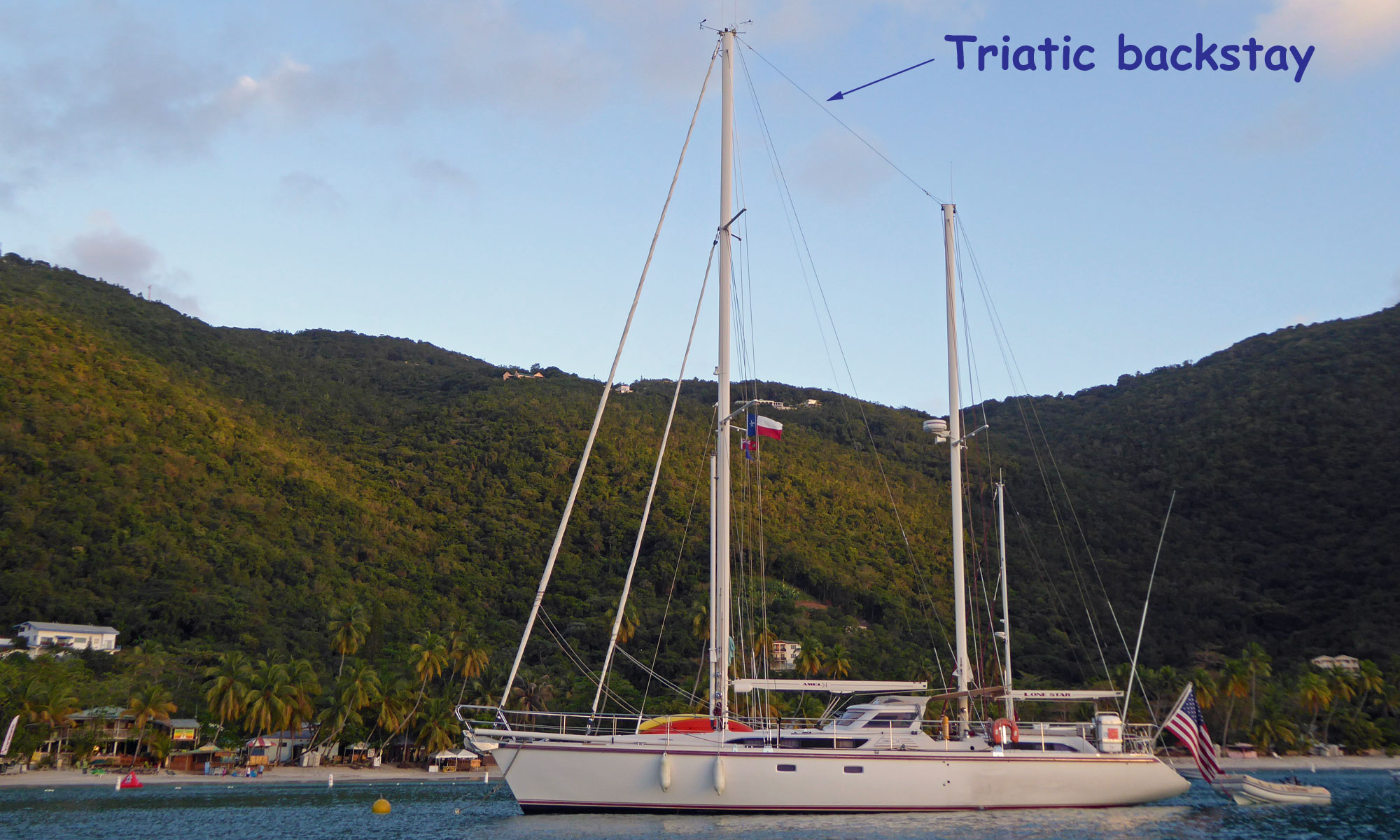 This Amel 54 cutter-rigged ketch sports a triatic backstay between the main and mizzen masts
This Amel 54 cutter-rigged ketch sports a triatic backstay between the main and mizzen mastsAlthough you'll see many ketch sailboats with a triatic backstay tensioned between the two mastheads, each mast should be stayed individually.
Whilst this stay is ideally placed to act as an insulated SSB radio aerial, in the event of the loss of one mast it's almost guaranteed to result in the loss of the other.
A staysail ketch like the Amel 54 shown above will carry the following suit of working sails:
- jib;
- staysail;
- mainsail;
- mizzen staysail;
- mizzen;
A cruising sloop of a similar size has only two sails to make up the same sail area, which would be considerably more difficult for a short-handed crew to handle.
So, in answer to the original question, although they're not the best choice for windward sailing, the ketch can make an ideal cruising sailboat.
Lastly, the mizzen mast on a ketch sailboat provides an ideal place to mount your radar scanner and wind generator. And as one old sea-dog once told me, a convenient thing to lean against when you're smoking your pipe.
A Few Examples of Ketch Rigged Cruising Boats
What are the Pros & Cons of a Ketch?
What are the Pros & Cons of a Ketch?
Pros:
- Spread of Sail: Ketches have their sail area distributed over a higher number of sails, which means the size of each sail is generally smaller when compared to a sloop. This is useful when conditions are rough, as it's easier and safer to handle smaller sails.
- Rig Options: The ability to switch between sail configurations makes ketches versatile. You can use only the mizzen and jib in a strong wind, only the main in moderate wind, and all sails in a light wind.
- Downwind Efficiency: Ketches tend to perform well when sailing downwind, as the mizzen sail helps to catch additional wind.
- Balance: The mizzen sail aids in stabilizing the boat which is useful when minimizing roll at anchor and helps balance the boat under sail.
- Emergency Steering: The mizzen sail can be used for emergency steering if the rudder or main steering system becomes damaged.
Cons:
- Cost: Ketches often cost more due to the additional rigging and hardware needed for the extra mast and extra sails.
- Maintenance: More rigging and more sails also mean more maintenance. Ketches may require more effort and cost to uphold.
- Windward Performance: Ketches are often outperformed by sloops or cutters when sailing upwind.
- Maneuverability: The extra mast can complicate tacking and jibing maneuvers, particularly in heavier winds.
- Space Occupancy: The mizzen mast in a ketch can limit the space available in the cockpit or aft areas.
It's important to note the pros and cons can vary based on the specific design of the ketch. Certain designs may mitigate some of the cons, and other pros may become more apparent in certain types of conditions.
What are the ideal sailing conditions and environments for a ketch sailboat?
What are the ideal sailing conditions and environments for a ketch sailboat?
Ketch sailboats are particularly suited for long-distance cruising and offshore sailing because of their stability, versatility in sail arrangements, and downwind performance. They perform best in moderate to heavy wind conditions where the additional mizzen sail can provide extra balance, power, and control.
These boats shine when sailing downwind or on reaches, where their additional sails can make full use of the wind. They also work well in heavy wind conditions where reducing sail area is necessary, as their multiple smaller sails can provide more manageable options.
In terms of environments, ketches tend to thrive in areas with consistent winds and open water, such as offshore or coastal cruising routes. Their stability and easy handling can be advantageous in rough sea states or when navigating rolling swells.
However, it's worth mentioning that the performance of a ketch can depend on the specific design of the boat, the skipper's sailing skills and the crew's ability to manage and adjust the sails on board.
Recent Articles
-
Wauquiez Gladiateur 33 for Sale
Apr 10, 24 05:40 AM
'Kesh', my Wauquiez Gladiateur 33 is only for sale because we've decided to go for a larger sailboat. She currently berthed in Florida, USA. -
'Cabo Frio', a Catalina Morgan 43 for sale
Apr 01, 24 08:35 AM
This Catalina Morgan 43 is for sale at a very reasonable price. She offers up to 7 berths in 2 cabins + saloon. There is full 6'5" standing headroom and good ventilation throughout. -
Live Aboard Boats For Sale
Mar 30, 24 07:02 PM
Ready to live the dream? Then browsing through this listing of live aboard boats for sale might just get you on your way...
